Information systems operated by the state enterprise "Tunduk":
- Electronic interoperability system "Tunduk";
- Catalog of interdepartmental interaction solutions
- State portal of electronic services
- Mobile application "Tunduk" of the State portal of electronic services
- State system of electronic communications
- Unified identification system
- Register of e-government infrastructure and Register of Basic information resources
- Covid-19 projects: "Electronic application for food assistance»
- Covid-19 projects: "Electronic permission for a vehicle to move around the city of bishkek during an emergency from 07: 00 to 20: 00"
- Covid-19 projects: System to support the activities of medical workers
- National monitoring system
- Strategic planning system
1. Electronic interoperability system "Tunduk"
The Electronic interoperability system "Tunduk" is designed to ensure the safe exchange of data between state bodies, local self-government bodies and commercial organizations.
The goal of the "Tunduk" project is to increase the efficiency of management in public authorities, significantly reduce corruption and reduce bureaucratic barriers for citizens and entrepreneurs by automating and ensuring reliable data, high-quality and prompt receipt of public services.
The project has been implemented in full-scale mode since 2018 and has been successfully implemented to date.
The tunduk system is designed to improve the efficiency of interaction between state authorities, ensure traceability of goods and services, as well as reduce bureaucratic barriers for citizens and entrepreneurs and reduce corruption through automated data exchange between state and municipal authorities directly, without the need to request information from citizens.
Principles of functioning of the "Tunduk" platform:
- transparency: when passing information through the "Tunduk" system, the authenticity, reliability and integrity of data use is ensured;
- availability of information for the participants of the "Tunduk" system means that data exchange is possible through the interaction of information systems at any time without the need for human intervention;
- privacy is achieved through data encryption and two-level authorization. The Tunduk system is protected from temporary interruptions and cyber attacks;
- technological neutrality (platform independence): The information systems of the participants of the "Tunduk" system are adapted to the general rules of data exchange without the need to rewrite information systems for one specific system. The "Tunduk" platform does not depend on the type of software, i.e. it does not matter what software is used in the state body, the "Tunduk" system can adapt to any database;
- versatility: participants of the "Tunduk" system have the opportunity to request access to any services provided through "Tunduk".
Stages of implementation of the "Tunduk" system»
The software on which the Tunduk system operates was transferred to the Kyrgyz Republic by Estonia in 2016. In the pilot, i.e. experimental, mode, the system began to work between some departments on the basis of the order of the Government of the Kyrgyz Republic dated October 14, 2016 No. 436-R.
In April 2018, for a full-scale launch of the system, the State Enterprise "Tunduk" was created.
Currently, all state bodies are connected to the EIS "Tunduk".
If in 2018, the annual data exchange between state agencies amounted to 363 thousand transactions, and between state agencies and commercial organizations there was no transfer of information at all, then by October 2020, the data exchange between state agencies reached 40.0 million, and between state and commercial organizations – 53.3 million transactions.
International experience
Currently, the Estonian information system "X-road", on the basis of which the system "Tunduk " works, is being developed in 20 other countries. according to experts, the electronic interoperability system in Estonia can save up to 1 billion euros and 800 years of working time annually.
In 2019 in Estonia:
- more than 1,000 commercial organizations and 487 government agencies were connected to the X-road system;
- there were 2,600 information services;
- In 2019, there were almost 1 billion data exchanges;
- 99% of public services were provided in an online format;
- 52,000 organizations indirectly use X-Road databases»;
- 99% of citizens have ID cards;
- 70% use the Internet regularly
Go to statistics of data exchanges in the "Tunduk" system
2. Catalog of interdepartmental interaction solutions
The Catalog of interdepartmental interaction solutions (Catalog) is designed to collect data on the participants of the EIS "Tunduk" and keeps records and monitoring of data.
The purpose of the information system is to provide up-to-date information about the information systems connected to the Tunduk system and the web services provided by them that operate in the EIS "Tunduk". A special feature of the system is that it updates the list of participants and the services provided by them in an automated mode without human intervention, which makes it impossible to duplicate or distort information about electronic interoperability system (EIS) participants.
The system also provides technical information such as WSDL web service description files, developer documentation, and metadata of EIS "Tunduk" objects, which allows IT specialists to develop information systems that interact through EIS "Tunduk".
In the system, you can view:
- list of participants of EIS "Tunduk";
- security servers connected to EIS "Tunduk";
- subsystems in EIS "Tunduk";
- services that participants can exchange via the EIS "Tunduk";
The catalog system was developed by specialists of the state enterprise "Tunduk".

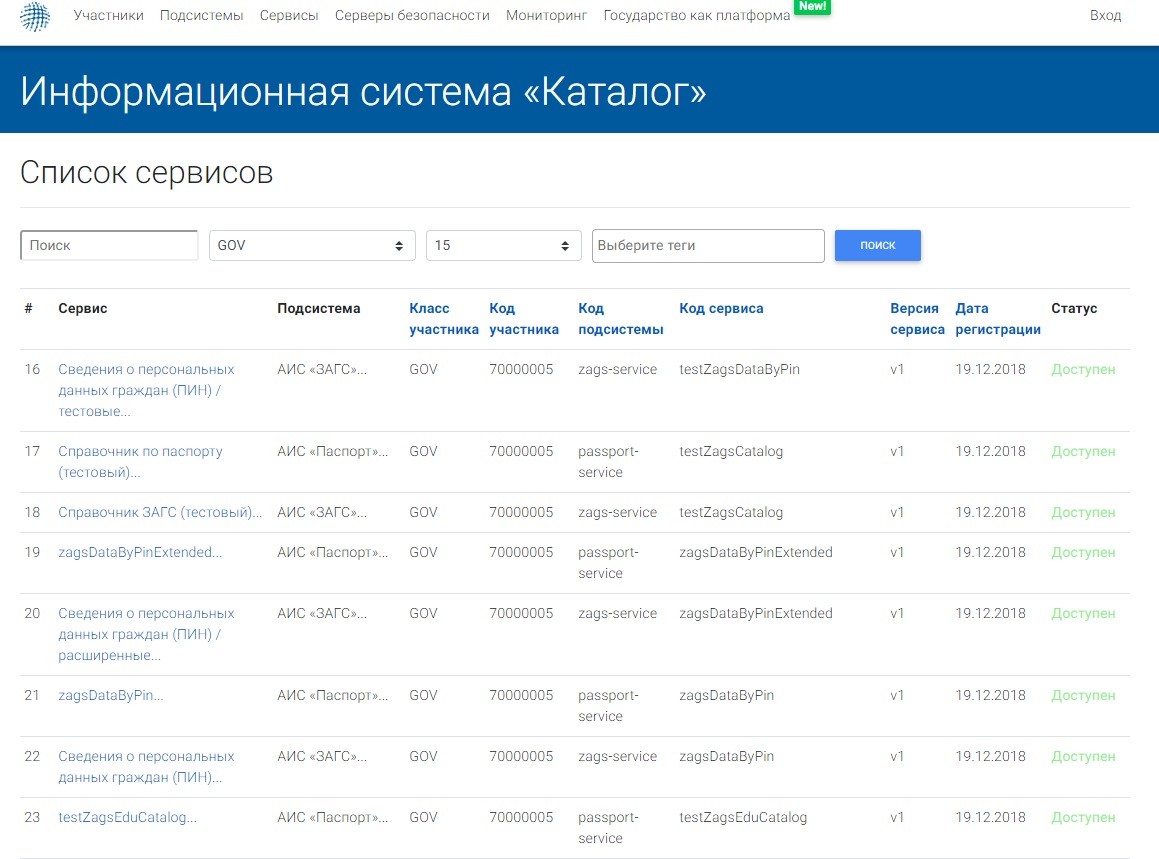
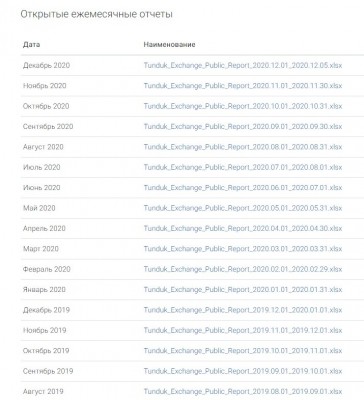
3. State Portal of Electronic Services
In order to improve the quality of public services provided to citizens in electronic format, the state enterprise "Tunduk" in 2020 began to modernize the SPES.
This is an information system that provides the provision of state and municipal services in electronic form. Even today, much can be obtained with the help of the state portal of electronic services. Citizens are already interested in the following services:
- obtaining a certificate of real estate
- applying for a criminal record certificate on the territory of the kyrgyz republic (free of charge)
- information about marriage
- provision of information from the address and reference bureau
- information about the availability of agricultural livestock
- information about pension savings (accumulative pension fund)
- checking the presence/absence of tax arrears
- information about the vehicle (+availability of fines)
- information on payment of transport tax
- information on the accruals of insurance premiums of the insured person (information on wages)
- applying for benefits "balaga suyunchu»
- obtaining other certificates and documents from 19 state agencies under the "Tunduk" system.
The system is actively developing and improving on a daily basis. It integrates new databases and information systems.
To enter the portal of electronic services, you must have a cloud-based electronic signature, which is issued free of charge in public service centers, or using a biometric passport-an ID card of 2017 (in this case, you must have a card reader and remember your ID card password).
In addition, in the personal account of a citizen on the portal, a service is implemented, using which citizens have the opportunity to control the transfer of their personal data, i.e. a citizen can find out which state agency and to whom his personal data was transferred.
Documents issued by the State Portal have legal force and are equal to documents issued by state and local self-government bodies in accordance with the Resolution of the Government of the Kyrgyz Republic "On Approval of the Rules for Using the State Portal of Electronic Services" dated October 7, 2019 No. 525 (as amended by the Resolution of the Government of the Kyrgyz Republic dated November 20, 2020 No. 573).
As part of the development and implementation of the State Portal of Electronic Services, as well as to improve the quality of the provision of state and municipal services, SE "Tunduk" has trained 120 employees and 83 heads of 50 state bodies to work on the new Portal with a new format for providing services.
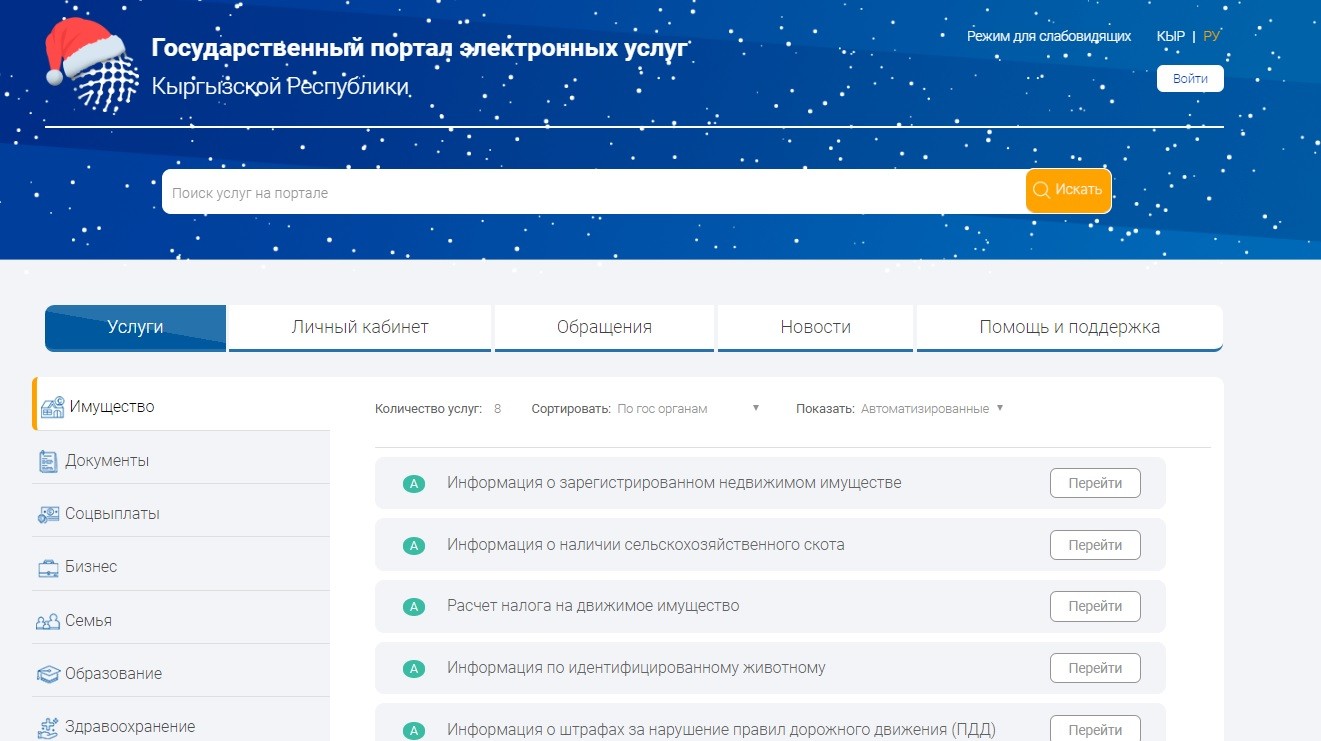
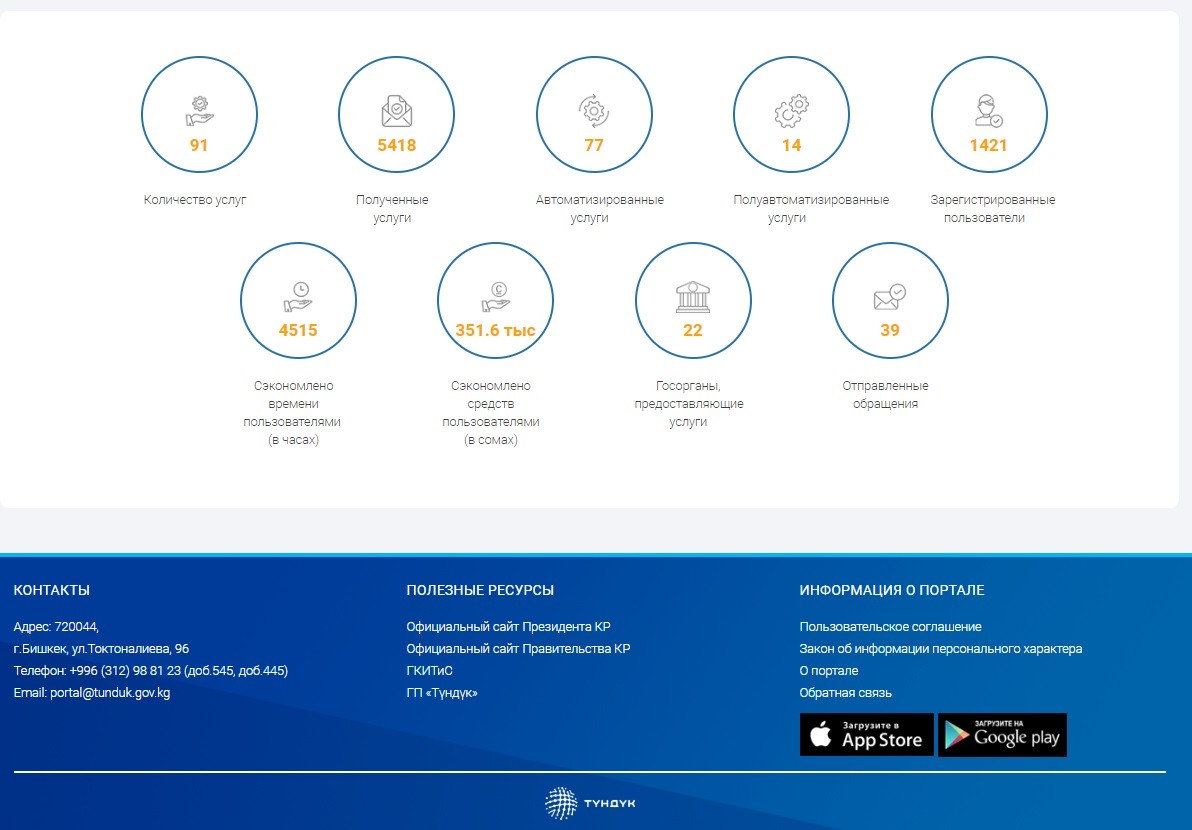
Go to the State Portal of Electronic Services
4. Mobile application "Tunduk" of the State Portal of Electronic Services
The mobile application "Tunduk" of the State portal of electronic services is a quick access to state electronic services.
Using the mobile application, you can:
- get services online;
- apply for the service;
- pay for state and municipal services.
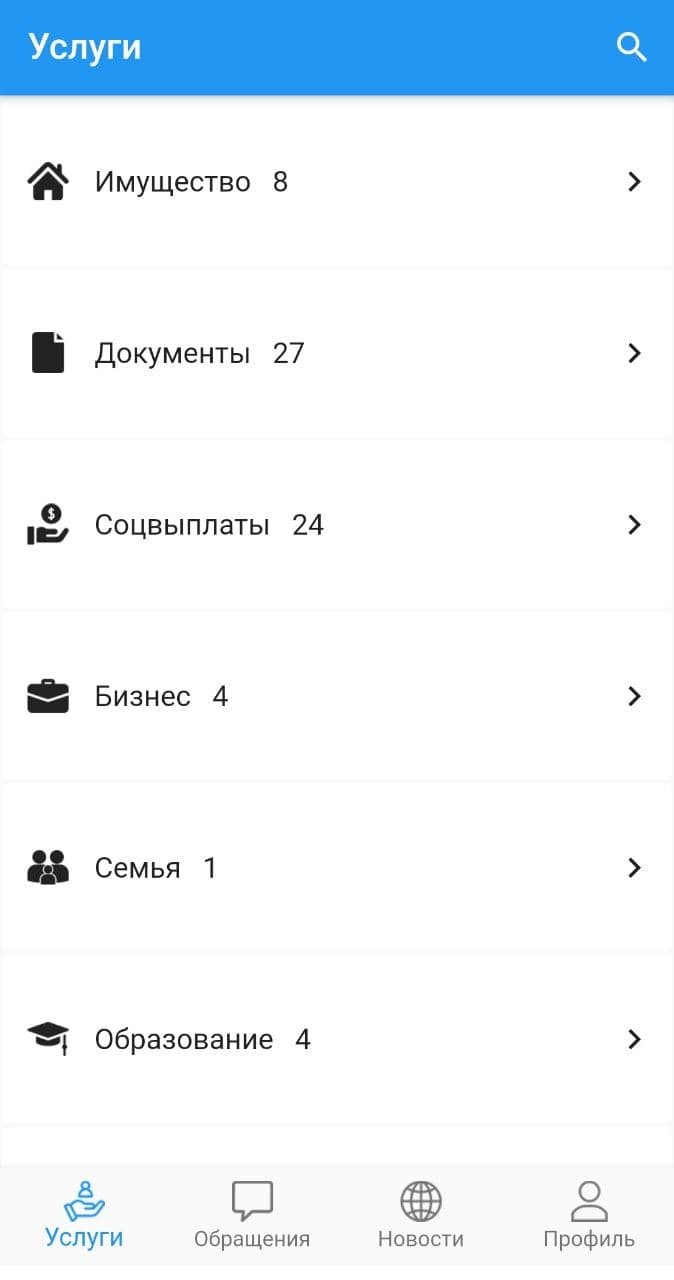
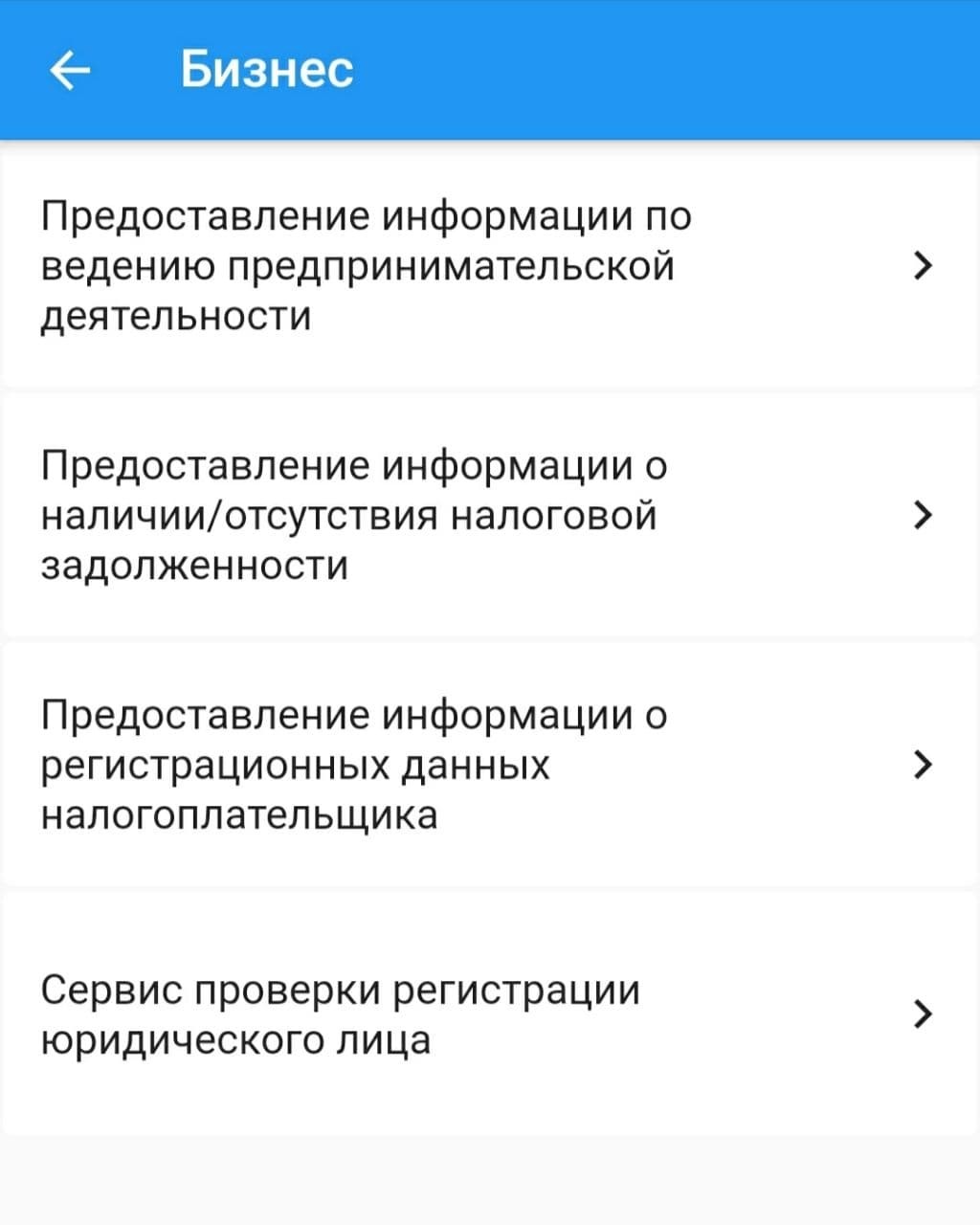
You can log in to the mobile app via a cloud-based electronic signature. Cloud electronic signature is issued free of charge in public service centers.
The app is available in the Play Market and App Store.
5. State system of electronic communications
The state system of electronic communications has been created so that citizens can apply in electronic format to state bodies, local self-government bodies and officials. the state system of electronic communications functions in cooperation with the state portal of electronic services, the system of interdepartmental electronic interaction "tunduk", the unified identification system and other information systems.
Citizens and entrepreneurs can apply to state and municipal authorities with official electronic messages that are signed with an electronic signature, as well as receive appropriate responses from state and municipal authorities.
the system allows citizens to track the progress of processing an appeal to state bodies and receive notifications about changes in the status of their appeal.
Go to the State system of Electronic Communications
6. Unified identification system
Unified identification system (hereinafter – ESI) - this information system is designed to identify users of electronic portals of state bodies and departments, as well as non-governmental organizations, to ensure authorized access to information.
The ESI serves as a single point of entry for citizens to the portals of public services, i.e. it excludes the authorization of a citizen or official in different information systems separately.
The main advantage of using this authentication method is that citizens only need to register once, using an ID card or a cloud-based electronic signature, and in the future they will be provided with online access to all electronic portals of state bodies that have already connected to the ESI.
Thus, citizens have the opportunity to fully secure access to each of the public services using a single account. For government agencies and departments, there is no need to develop duplicate functionality for registration, accounting and administration of users. esi is also available for integration with information systems of non-governmental organizations.
ESI is also available for integration with information systems of non-governmental organizations.
Go to the Unified Identification System
7. Register of e-government Infrastructure and Register of Basic information Resources
The information systems Register of e-government Infrastructure and Register of Basic information Resources ensure that the register of all automated information systems, software, data processing centers, hardware and information registers registered with state and local self-government bodies of the kyrgyz republic is maintained.
Data in the databases are entered based on existing information systems, data processing centers and hardware equipment that is available to the state.
Users of these digital registers are the state bodies of the Kyrgyz Republic and local self-government bodies. Legal entities and individuals can use the information placed in both registers as a consumer.
8. COVID-19 projects: "Electronic application for food assistance"
During the COVID-19 pandemic, the "Electronic Application for Food Aid" system allowed citizens to apply for humanitarian aid from the state. For government agencies, the system has ensured a coordinated work on the distribution of aid to vulnerable populations, preventing the distribution of aid to persons suffering from the consequences of the introduction of a state of emergency or not being in a difficult situation.
the system makes it possible to increase the efficiency of the distribution of humanitarian aid by linking the territorial bodies of local self-government and state bodies in the field of social support. during the quarantine, more than 680 thousand applications were received from citizens, of which more than 400 thousand received humanitarian assistance thanks to this system. this system can be further developed into a full-scale system for recording, submitting applications and receiving humanitarian assistance for the population, especially in the event of emergencies or other situations.
Go to the Electronic application for food assistance
9. Projects on COVID-19: "Electronic permission for a vehicle to move around the city of Bishkek during an emergency from 07: 00 to 20: 00"
The system "Electronic permission for a vehicle to move around the city of Bishkek during an emergency from 07: 00 to 20: 00" (https://1312.tunduk.kg/) carried out the issuance of electronic passes during quarantine in electronic format. The system made it possible to monitor the process of issuing passes and contributed to ensuring transparency and maximum security of citizens in a state of emergency. se "tunduk" developed the system in the shortest possible time during the quarantine. During the quarantine period, employees of the City Hall considered more than 110 thousand applications from citizens and issued more than 13 thousand permits.
10. COVID-19 projects: A system to support the activities of health professionals https://med.tunduk.kg/.
Systems to support the activities of medical professionals (http://med.tunduk.kg/) is an open portal where medical workers can send an application for providing the health care organization with the necessary personal protective equipment, medical devices, equipment and medicines, as well as inform the republican headquarters about the existing problems and difficulties in work (passes, food, remuneration, etc.). The system was developed in a short time during quarantine, at the moment it is necessary to carry out work on the modernization of the system.
11. The national monitoring system
The national monitoring system is an information system that serves as a tool for state leaders in the analysis of large amounts of data under the jurisdiction of a particular state body, in the form of statistical reports accompanied by infographics.
The information system "Strategic Planning System "(hereinafter - IS "SSP") is designed for unified accounting, storage and provision of information on approved state strategic documents (strategies, concepts, activities, programs, "road maps" and plans), as well as ensuring effective control over the implementation of the above activities by the responsible authorities within the specified time frame.
Users of the IP " SSP " are the state authorities of the Kyrgyz Republic and local self-government bodies. Citizens will be able to view up-to-date information.
At the development stage.




